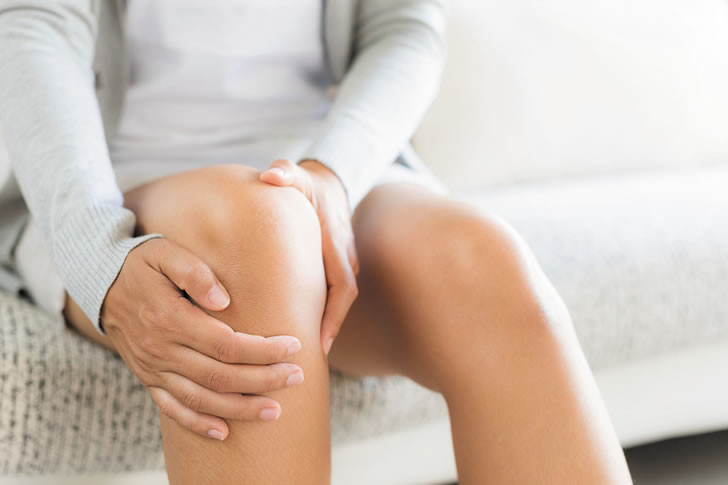Comprehensive Guide to Knee Pain Treatment
Knee pain is a common ailment that affects people of all ages. Effective treatment strategies are essential to improve quality of life and mobility.

Understanding Knee Pain
Knee pain can result from various causes, each with its symptoms and treatment options. Identifying the underlying cause is crucial for effective management.
Causes of Knee Pain
- Injuries: Ligament injuries (ACL, MCL tears), meniscal tears, fractures, dislocations.
- Medical Conditions: Arthritis (osteoarthritis, rheumatoid arthritis), gout, infections (septic arthritis), osteoporosis.
- Overuse: Tendinitis, bursitis, iliotibial band syndrome.
- Biomechanical Issues: Flat feet or high arches, poor alignment, muscle imbalances.
- Degenerative Changes: Age-related wear and tear, degenerative joint disease.
- Lifestyle Factors: Obesity, lack of physical activity, poor posture.
- Other Factors: Tumors, cysts (Baker’s cyst).
Symptoms of Knee Pain
- Swelling and stiffness
- Redness and warmth to the touch
- Weakness or instability
- Popping or crunching noises
- Inability to fully straighten the knee
Treatment Options for Knee Pain
Non-Surgical Treatments
- Rest and Activity Modification
- Avoid activities that exacerbate pain.
- Ice and Heat Therapy
- Ice for acute injuries and heat for chronic pain.
- Medications
- Over-the-counter pain relievers (NSAIDs, acetaminophen).
- Physical Therapy
- Strengthening and flexibility exercises.
- Injections
- Corticosteroid or hyaluronic acid injections.
Surgical Treatments
- Arthroscopy
- Minimally invasive procedure to repair knee damage.
- Partial Knee Replacement
- Replacement of only the damaged part of the knee.
- Total Knee Replacement
- Replacement of the entire knee joint.
Bullet List of Non-Surgical Treatment Options
- Rest and avoid activities that cause pain.
- Use ice packs for acute pain and swelling.
- Apply heat for chronic pain.
- Take NSAIDs or acetaminophen for pain relief.
- Engage in physical therapy exercises.
- Consider corticosteroid or hyaluronic acid injections.
Q&A Section
What are the best exercises for knee pain?
Strengthening exercises such as quadriceps sets, straight leg raises, and hamstring curls, along with stretching exercises for the calf and hamstrings, can be beneficial.
When should I see a doctor for knee pain?
Consult a doctor if the pain is severe, persistent, accompanied by significant swelling, redness, or warmth, or if it causes significant difficulty in bearing weight.
Are knee braces helpful?
Knee braces can provide support and stability, especially for conditions like ligament injuries or arthritis. Consult a healthcare provider to choose the right type of brace.
What are the risks of knee surgery?
Potential risks include infection, blood clots, continued pain, and complications related to anesthesia.
Pricing Chart for Knee Pain Treatments
| Treatment Type | Estimated Cost (USD) |
|---|---|
| Physical Therapy | $50 – $150 per session |
| Medications (NSAIDs) | $10 – $50 per month |
| Corticosteroid Injection | $100 – $300 per injection |
| Hyaluronic Acid Injection | $300 – $500 per injection |
| Arthroscopy | $5,000 – $10,000 |
| Partial Knee Replacement | $14,000 – $20,000 |
| Total Knee Replacement | $20,000 – $50,000 |
Statistical Analysis
Prevalence of Knee Pain by Age Group
- Ages 18-34: 10%
- Ages 35-50: 20%
- Ages 51-65: 30%
- Ages 65+: 40%
Success Rates of Knee Pain Treatments
| Treatment Type | Success Rate (%) |
|---|---|
| Physical Therapy | 70 – 85 |
| Medications (NSAIDs) | 60 – 75 |
| Corticosteroid Injection | 50 – 70 |
| Hyaluronic Acid Injection | 40 – 60 |
| Arthroscopy | 75 – 90 |
| Partial Knee Replacement | 85 – 95 |
| Total Knee Replacement | 90 – 98 |
Mind Map of Knee Pain Management
- Non-Surgical Treatments
- Rest
- Ice and Heat
- Medications
- Physical Therapy
- Injections
- Surgical Treatments
- Arthroscopy
- Partial Knee Replacement
- Total Knee Replacement
- Supportive Measures
- Knee Braces
- Weight Management
- Assistive Devices
References







Recent Comments